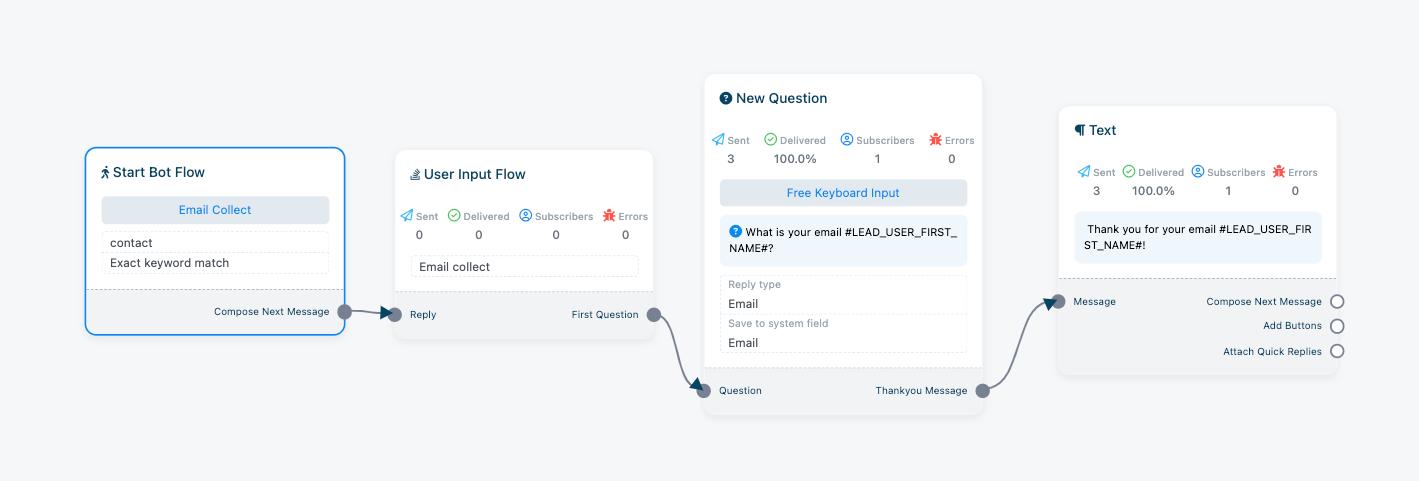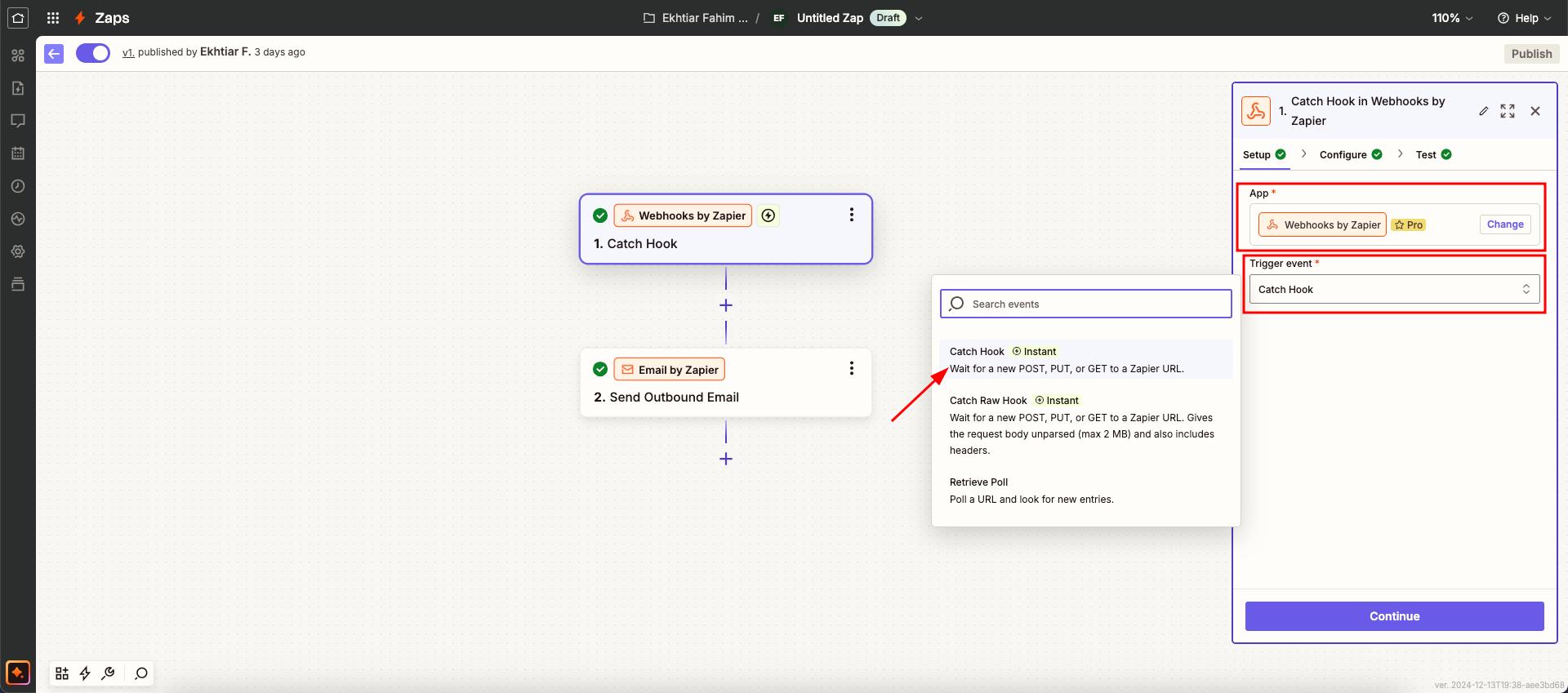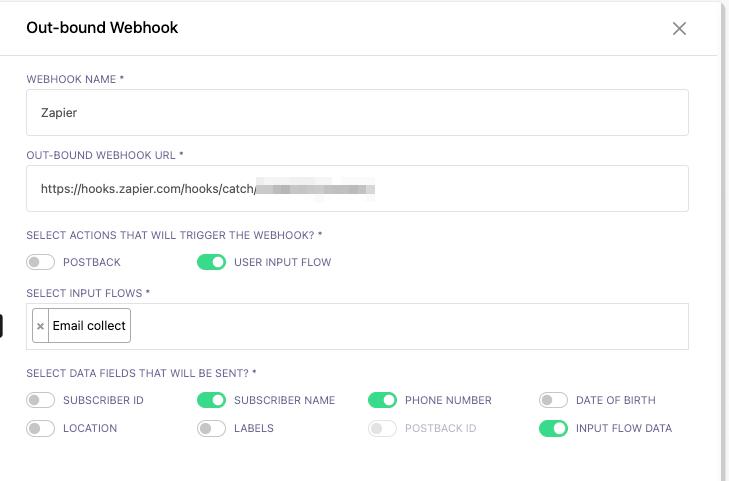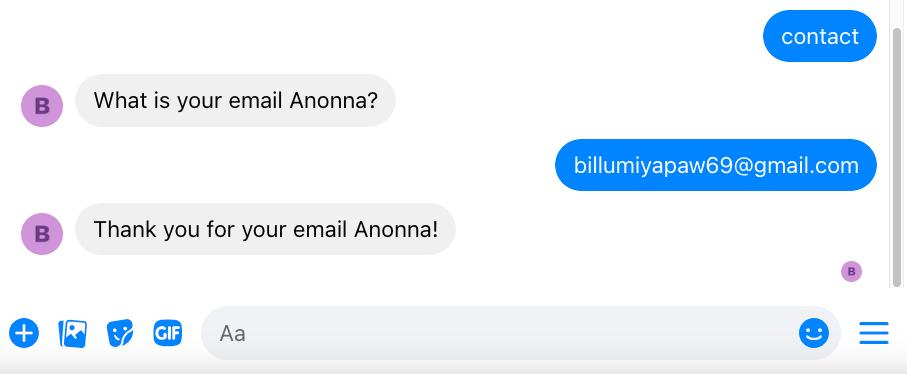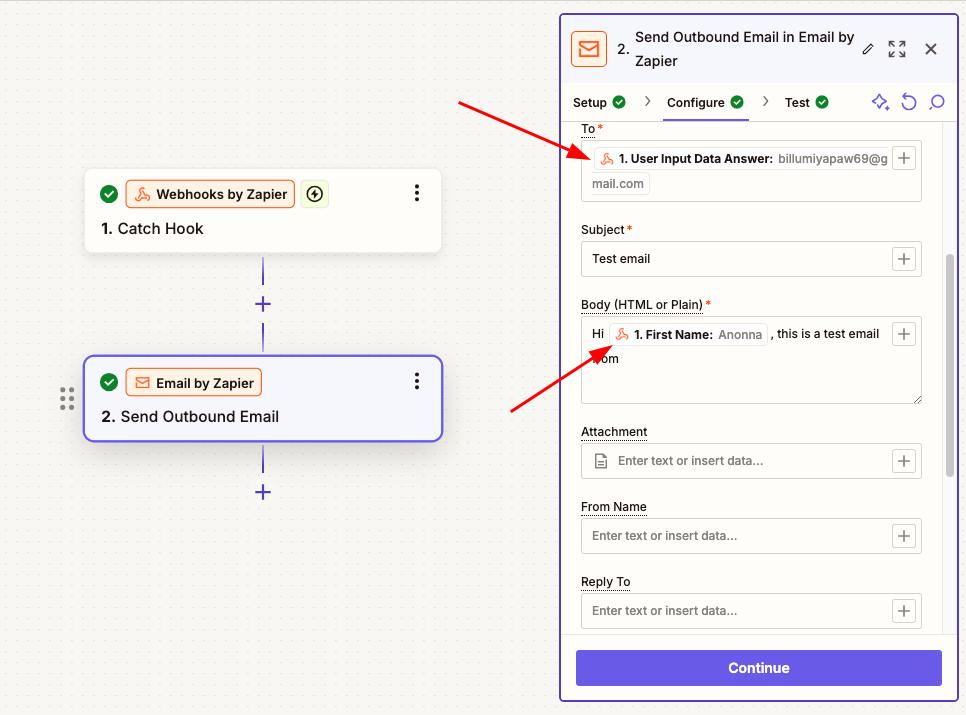Outbound webhooks let one app send data or trigger actions in another app using HTTP requests. This creates a real-time pipeline for information and event notifications. This is useful for automating tasks, syncing data between apps, and setting up alerts. In this artcile, you will learn how to use outbound webhooks to send the information collected on your Facebook chatbot to a 3rd party website. We picked Zapier for an easy demonstration, but it works the same with any other platform.
To set up an outbound webhook, follow the steps below.
Create an User Input Bot Flow. Go Facebook > Bot Manager. Select your account navigate to the Bot Reply and click on the Create button.
Configure a flow to collect information and trigger the webhook. In this example, we created one asking for the lead’s email.
Now, navigate to the Outbound Webhook section. Click the Create button.
You will be asked for a webhook URL. This is provided by the app where you want to send the information.
Since in this example we are using Zapier, you need to obtain it from there. Log into Zapier and create a zap. As the first app select webhook and set the trigger event as Catch Hook. You will get the webhook url.
Go back to BotCommerce and paste it on the corresponding field. Provide a name for your webhook and specify the input flow that you created earlier. Select the information that you want to send. Finally, save the webhook configuration.
Back on Zapier, test the webhook. Send the trigger keyword you set before on Messenger to launch the flow. Answer it as a customer would do. You should see that the information is received on Zapier.
You can now use it to launch another action. In this example, since we collected the user’s email, let’s send them one. On Zapier, add a step by clicking on the (+) plus sign. Here search for “Email” and save it. Then map the webhook data into the email setup.
Click on continue and test the step. You will get the email as a test from Zapier. Then publish the zap.
Test it! Send the trigger one more time on Facebook Messenger and answer the questions again. Wait and you will get the email within a few seconds.
That’s it! This is how you can set up outbound webhooks to send data to Zapier. And that’s just the beginning. Outbound webhooks open the door to countless automations. You could send new chatbot leads to Google Sheets, trigger SMS notifications via Twilio, update CRM records in HubSpot, or even automate tasks in Slack or Notion. As long as the platform accepts webhooks or integrates with tools like Zapier, Make, or Pabbly — you’re good to go. Whether you’re nurturing leads, syncing databases, or alerting your team in real time, outbound webhooks give you full control to build the workflows your business needs.


